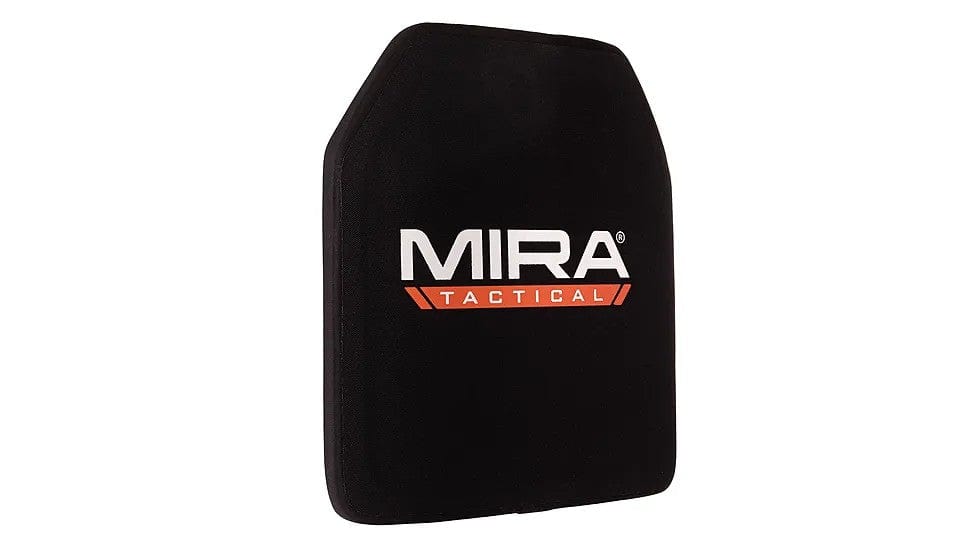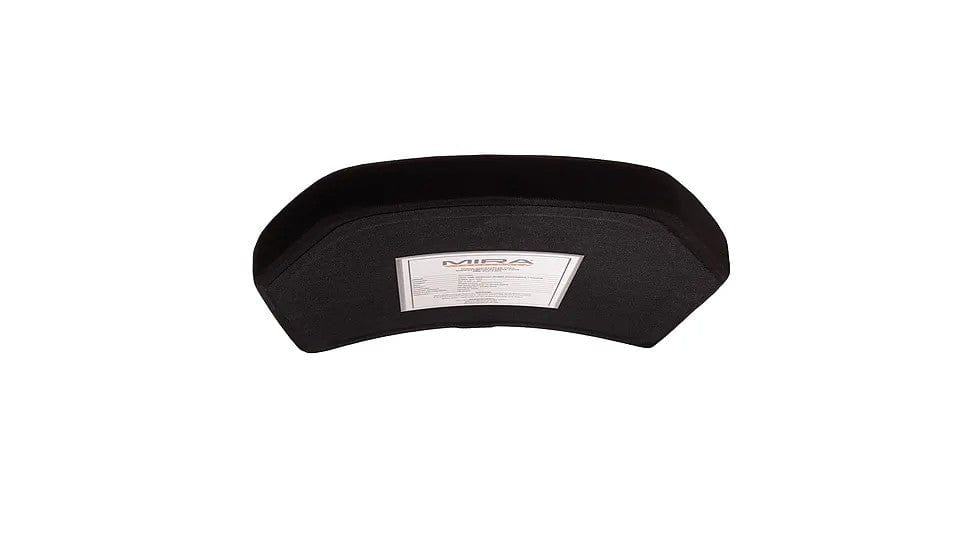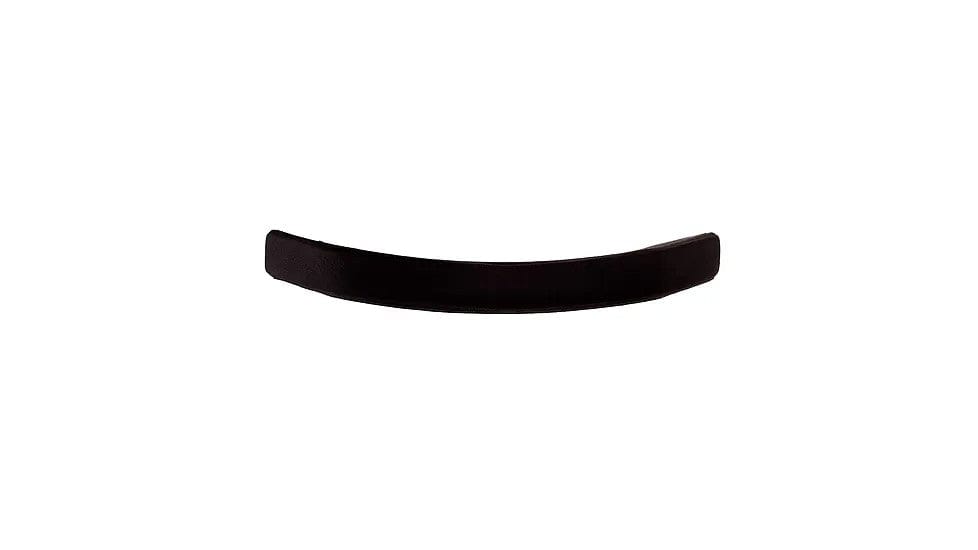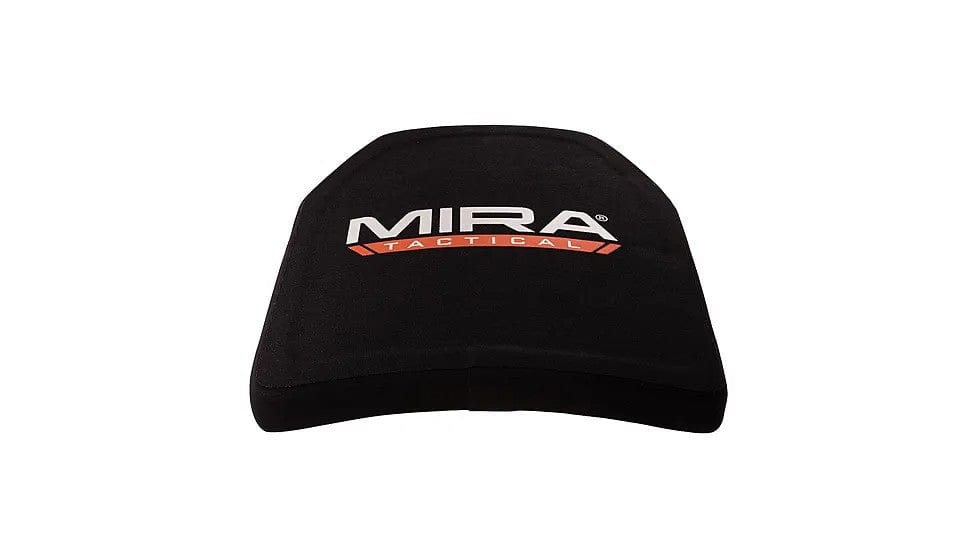Description
Gun violence increased lately. Cities considered safe only a few months ago now see a spike in gun violence. It is an unsettling reminder that a bad situation can always get worse and that protecting yourself from humans entails preparing to defend your family and yourself from any attack.
This is where MIRA Tactical's Level IV Body Armor comes into play. Like all of their protective products, the revolutionary poly-ceramic blend armor makes no compromises to reliability or quality.
MIRA employed the most cutting-edge techniques and materials to provide a lightweight, helpful solution for everyone—from first-time customers to those with previous body armor looking to upgrade. This protection can be added to a tactical backpack or used to put up a covert armor rig.
The most readily available armor options currently cap your overall protection at Level IIIA, Level III, or Level III+. The Level IV body armor plates can transform your regular backpack into a hidden armor shield at a very low weight, or they can dramatically improve protection for vital organs.
Alumina Oxide Ceramic (AI203) and ultra-high molecular weight polyethylene (UHMWPE), which are both lighter and more durable than the steel used in conventional Level III armor, are the fundamental components of their Level IV Body armor's lightweight strength.
The lifesaving abilities of these lightweight composites have already been shown by users in the police and special forces military groups. After manufacture, the plates are formed to the typical 10 x 12 size used by most plate carriers with standard right-hand shooters cut for increased comfort. Initial plates were tested against several shootings using 5.56 mm and 30.06 rifle bullets with armor-piercing capabilities. A plate that weighs under six pounds and is less than an inch thick can deflect many combat rifle shots that travel at a speed of 3,000 feet per second.
The MIRA Tactical Level IV plate won't practically break your back, unlike most Level IV products made of steel and ceramic, which weigh anywhere from 7.513 pounds. This will help you avoid long-term lower back, hip, and knee problems brought on by lifting big loads.
MIRA Safety is honored to provide police, military personnel, independent security contractors, and US-based civilians with the new MIRA Tactical Level IV Body Armor.
FEATURES
- Greater Protection with the Level 4 Body Armor Plate: Standard Level IV 10" x 12" plates with shooter's cuts provide a single curve, making it simple to deploy in various plate carriers.
- Variation on Side Plates: This product is in size 10” x 12” Lightweight. Optional side plates measuring 6" x 6" and 6" x 8" are available and fit most cummerbunds and plate carriers.
- Ballistic ultra-high molecular weight polyethylene (UHMWPE) provides anti-spall protection, preventing bullet fragments from spreading outward and injuring the wearer's face or limbs.
- Upgrade the plate carrier with Level IV "stand-alone" body armor.
- It is LIGHTER than certain Level III plate designs that offer less protection, measuring only.9" thick and 5.9 pounds.
- Lightweight construction is made possible by modern, weight-saving materials like ultra-high molecular weight polyethylene (UHMWPE) and alumina oxide ceramic (AI203).
- The UHMWPE is extended from edge to edge to provide a larger protection area.
- Provides great defense against anything, including common rifle systems like the AR-15, AK47, M4, and tiny handguns to battle rifles.
- It is an ideal upgrade for a tactical backpack or low-profile/concealed body armor setup when lightweight and uncompromised protection has significant advantages.
- Extensive testing by a US-based facility following NIJ Level IV armor standards.
- Includes a ten-year warranty to guarantee the quality of your experience.
- Threat level, threat defense capabilities, manufacture date, and other significant information are printed on an easy-to-read label on the rear of the plate.
- Manufactured in the USA.
SPECIFICATIONS
- Manufacturer: MIRA Safety
- Color: Black
- Size: One Size
- Length: 10 in
- Height: 12 in
- Fabric/Material: Ceramic
- Threat Level: Level IV
- Weight: 5.9 lb
- Thickness: 0.9 in
- Coating: Polyethylene
- Plate Dimension: 10x12
- Armor Type: Composite
- Armor Rating: NIJ Level IV
- Warranty: 10 years
Storage:
UHMWPE plates should not be subjected to temperatures above 150°F for an extended period. The plate's integrity and protective capabilities may be reduced by prolonged exposure to intense heat. Although high temperatures are rare, keeping your armor in a cold, dry, and dark location is preferable away from intense heat.
MIRA’s Ballistic PE Specs
A composite laminate-based fiber with an ultra-high molecular weight of polyethylene creates continuous unidirectional (UD) fabric. With a unique adhesive rubber and glue film, a roll of fabric comprises double-two fibers of unidirectional sheet cross-piled at 90 degrees to one another. Corrosion, acid, alkali, UV light, and moisture cannot harm the UD fabric, which has a high strength and modulus.
As a result, it can be used widely in ballistic armor plates, bulletproof products, and ballistic and anti-stab products.
|
Areal Density: |
240 (±2.5) g/m² |
|
Strength: |
=38 g/d |
|
Modulus: |
=1300 g/d |
|
Strands: |
240 |
|
Monofilament Fitness: |
2.5 |
|
Elongation at break: |
˜2.8 |
|
Shrinkage: |
<1% |
|
Melting Mass Temperature: |
144~152 °C |
MIRA tests its products beyond the requirements of NIJ Standard 0101.6. This comprises the following:
Ref Sec. 6 Hard Armor Conditioning Protocol
Scope and Purpose: This part is meant to test the ability of hard armor or plate inserts to sustain ballistic performance after being exposed to heat, moisture, and mechanical wear. Only rigid systems are intended to be covered by this protocol. Following this armor conditioning technique, ballistic testing, as outlined in section 7, will confirm the ballistic performance.
(1) a 24-hour acclimatization time to ensure that the conditions for all products at any intended climatic test location will be the same at the start,
(2) an even heat exposure of 10 days,
(3) subjection to a temperature cycle, and
(4) testing for mechanical durability.
Ref Sec.7 Ballistic Test Methods
Scope and Purpose: Concerning the Perforation Backface Signature (PBFS) and baseline Ballistic Limit (BL) tests, this section outlines the methodology and performance standards for ballistic testing of body armor. To pass the first test series, known as P-BFS testing, the armor must consistently show its ability to withstand perforation and severe blunt force trauma. Perforation performance is statistically estimated in the second test series, known as BL testing. Additionally, a subset of the sample set for flexible vests and jackets will go through the flexible armor conditioning methodology outlined in section 5. The full sample set will use the hard armor conditioning procedure outlined in section 6 for hard armor and plate inserts. Ballistic testing will be done on the conditioned samples.







